"Caught red-handed at the Venice Airport: two tanks, four Lockheed P-38 Lightning fighters, two amphibious landing vehicles, automatic weapons, plans to launch a coup, and a Lt. Colonel in the U.S. Army."
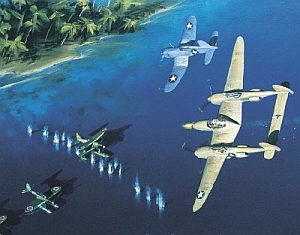 The arrival en masse of Mohamed Atta’s terrorist cadre at the Venice Municipal Airport was happenstance, goes the official story, and the terrorist’s presence there an accident of history, unrelated to any pre-existing climate of crime or corruption.
The arrival en masse of Mohamed Atta’s terrorist cadre at the Venice Municipal Airport was happenstance, goes the official story, and the terrorist’s presence there an accident of history, unrelated to any pre-existing climate of crime or corruption.
Nothing could be further from the truth.
This was illustrated again recently when decades of old newspaper clippings became available online, revealing the full range of the extraordinary history of criminal mischief and international intrigue at the Venice Airport.
For example: our recent story headlined "60 year history of drug trafficking at Venice Airport" was off by fifteen years, according to a “Looking Back” feature from the Aug 28 1964 Sarasota Herald Tribune, which reveals that the oldest report of drug trafficking at what will become the Venice Airport occurred thirty years earlier.
On that date in 1934, “A dope-smuggling plane was captured by Federal Agents near Venice,” the paper reported.
In unbroken succession in the decades since, the Venice Municipal Airport— decade-in and decade-out—has played host to drug smuggling, gun running, the launching of coups in the Caribbean, mercenary training, even murder…
It is a remarkable history of international intrigue with a distinctly ‘spooky’ flavor.
"The Company" gets its money's worth in Sarasota
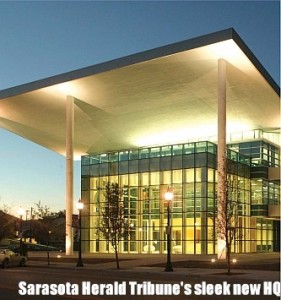 In most cases, as we will see, it wasn't amateurs or free-lancers who were responsible for the criminal mischief, but people belonging to, or with close ties, to the political elite.
In most cases, as we will see, it wasn't amateurs or free-lancers who were responsible for the criminal mischief, but people belonging to, or with close ties, to the political elite.
Mayors, County Sheriffs, the Florida State’s Attorney, and Governors of at least two Southern states have been "compromised" by the shadowy forces operating out of the Venice Airport, whose common denominator appears to be the sense of having been given a green light to engage in what sociologists today call “State-Sponsored Organized Crime.”
And the one newspaper which knew this, the local Sarasota Herald Tribune, kept it secret from its own readership, and the rest of the country.
How could information about the Venice Airport, so critical to our understanding of the 9/11 attack, have been successfully hidden from the American people?
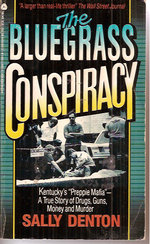 One clue lies in the suppression of reporting by authors Roger Morris and Sally Denton (in their book “Partners in Power” as well as Denton’s earlier “The Bluegrass Conspiracy”) about events at the Mena airport—a landing strip too insignificant to show on most road atlases – which became a hub of international drug and arms smuggling during the 1980’s.
One clue lies in the suppression of reporting by authors Roger Morris and Sally Denton (in their book “Partners in Power” as well as Denton’s earlier “The Bluegrass Conspiracy”) about events at the Mena airport—a landing strip too insignificant to show on most road atlases – which became a hub of international drug and arms smuggling during the 1980’s.
(In our next story, we will present evidence that the mammoth drug smuggling organization called The Company, described in the Bluegrass Conspiracy, was operating at the Venice Airport during the late 1970's and early 1980's.)
Another clue lies in the suppressed history of both the airfield Mohamed Atta called “home,” as well as that of the Sarasota Herald-Tribune.
The Coup That Got Away
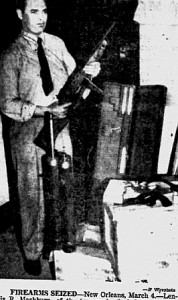 Two years after the end of WWII there was a textbook example of how inconvenient events at the Venice Airport get "hushed-up," at least locally…
Two years after the end of WWII there was a textbook example of how inconvenient events at the Venice Airport get "hushed-up," at least locally…
"Two P-38 planes reportedly consigned for Cuba to aid in a revolution are safely impounded at Venice," reported the March 16,1947 Sarasota Herald Tribune, paraphrasing an earlier article in the Miami Herald.
“Another two P-38's were impounded in New Orleans, along with cache of rifles, revolvers, machine guns… even several tanks and amphibious landing craft.”
“Officials declined to comment on reports prevalent in Miami and Havana that the planes were a part of a plot to attempt a revolt against the Cuban government.”
“The two planes seized in Venice were gassed up and ready to take off for a destination which customs officials refused to reveal.”
“But,” said Stuart Morrison, HERALD staff writer, “the two planes were for the account of a Cuban revolutionary attempt, I am reliably informed.”
“The MIAMI HERALD stated flatly that the planes were part of a plot to start a revolution in Cuba.”
The planes, tanks, and weapons belonged to a certain William I. Margolis from Gulfport Ms., identified as “the president of a company which carried on mahogany operations in Central America.
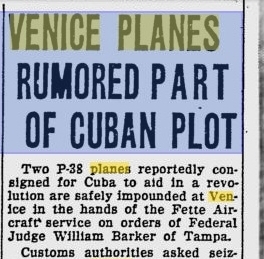 In addition to the two P-38’s busted in Venice, another two had been seized in New Orleans. The two amphibious landing craft were reportedly loaded with tanks and ready to go when Customs officials swooped in. They'd also found what they called “a huge weapons cache” at Marsalis’ home in Gulfport.
In addition to the two P-38’s busted in Venice, another two had been seized in New Orleans. The two amphibious landing craft were reportedly loaded with tanks and ready to go when Customs officials swooped in. They'd also found what they called “a huge weapons cache” at Marsalis’ home in Gulfport.
It was, it seemed obvious, a well-funded coup, or revolution. No hiding in the hills building revolutionary consciousness, like the Fidelistas.
Not when you've got tanks. Still, company officials tried to brazen it out…
They said the guns were for a hunting trip.”
The Sarasota Herald Tribune offers full service media cover-up
Bald-faced lies don't get much balder than this. Well, actually they do…
The weapons weren’t headed for a revolution in Cuba, the Sarasota Herald Tribune reported.
This is when the paper began tap-dancing in earnest.
“Seized Venice Planes Seen Headed for Honduras Farm,” read the headline.
“The possibility developed today that the two P-38 planes seized in Venice may have been designed for an agricultural project in British Honduras.”
“A U.S. firm had considered a project for the agricultural development of British Honduras, encouraging former U.S. soldiers with farming backgrounds to bring such surplus war equipment as amphibious craft and tanks to carry out the program."
"'The machine guns rifles revolvers and shotguns seized in Gulfport were meant to protect company workers on a farm in Honduras,' stated a Marsalis company official in Honduras."
"The tanks and amphibious landing craft could be converted to peacetime use in clearing and plowing land and removing stumps."
"When first we practice to deceive, we eventually get pretty good at it."
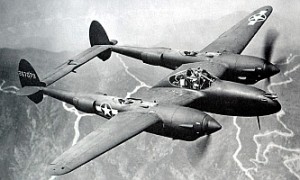 However, the paper's explanation of the big mix-up wasmum on the four P-38 fighters.
However, the paper's explanation of the big mix-up wasmum on the four P-38 fighters.
Maybe they were to be use to strafe crows.
We also couldn't help noticing that the Sarasota Herald Tribune was alone in reporting what seems clearly to be an utterly lame explanation.
Soon, however, the paper went even further.
The headline read: Doubt Is Seen Venice Planes Part of Plot (sic).
Ambassadors from Nicaragua Honduras and Costa Rica were all reassuring the U.S. State Dept the Sarasota Herald Tribune reported: They knew of no plots to overthrow their governments.
"The tanks were meant for clearing land, the guns for protection, and the planes for transportation," a Marsalis company official in Honduras explained.
They were now neglecting to mention the amphibious landing craft. But as a famous American (Ralph Waldo Emerson) once wrote, "A foolish consistency is the hobgoblin of little minds."
In any event the story deserved an 'A' for effort… There were, after all, quite a number and variety of weapons systems to explain away.
A former bomber pilot & a "construction company"
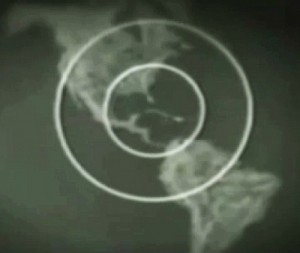 Thankfully a report in the St Petersburg Times under the headline Three Convicted of Gun-Running Conspiracy put things into perspective:
Thankfully a report in the St Petersburg Times under the headline Three Convicted of Gun-Running Conspiracy put things into perspective:
“A former bomber pilot and two partners in a“construction company” pleaded guilty in Federal Court yesterday to conspiring to ship war equipment including tanks and aerial bombs, to British Honduras.”
Our take on all this is that—just as a rule of thumb—if your cover story as a “construction company” gets placed in quotes by reporters, its probably not going to fly.
But then, 50 years ago, cover stories were considerably less sophisticated.
Marsalis, the story related, had explained the landing ships, the tanks, the P-38 fighters and the munitions dump this way:
“Marsalis explained at the time that he was thinking of opening logging operations in British Honduras and needed the arms to keep the natives and wild beasts from attacking his workers in the jungle.”
This would be pretty Monty Python-esque, except it was before their time.
It was a disaster for the hapless Lieutenant Colonel Marsalis, who we may assume today, with the benefit of hindsight, had been acting under orders from “unnamed superiors” in positions of authority in the brand-new national security state that was just then (in 1947) being born.
The other two men convicted were both executives of the famous Higgins Boat Company in New Orleans, which had made thousands of landing craft that GI’s used to hit the beaches during the Second World War.
Marsalis, the judge stated, had had a “splendid war record.” Apparently he just wanted to keep the good times rolling.
It was left to TIME MAGAZINE, in a story called "Guns Across the Caribbean," to put the story into perspective. In waterfront cafes in Miami and New Orleans, coups were being plotted against a half-dozen governments. Ideology mattered little: the plots were against governments on both the right (Nicaragua, Honduras, the Dominican Republic) and the Left (Cuba, Guatemala, Venezuela.) What mattered was that:
"At hand in the U.S. were stacks of surplus guns, as well as plenty of adventurers, fighter pilots, aerial gunners and combat infantrymen who would fight at the drop of a dollar.
In others words, winning World War II was not without its negative consequences.
Shillin' for the Man
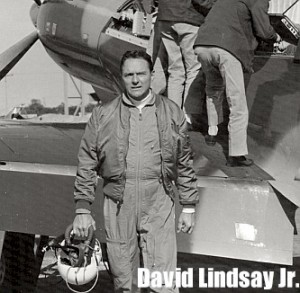 What makes this important is the role played by the local Sarasota Herald Tribune.
What makes this important is the role played by the local Sarasota Herald Tribune.
Not yet content that it had covered itself with glory, the paper fired off (on Jun 15, 1957) one last story on the aborted coup:
“VENICE PLANE BUYER SAYS HE IS BROKE.
The story conveyed the plaintive ruminations and sad thoughts that Lt. Col Marsalis had been having about the sorry state of the American free enterprise system.
Federal agents had treated him “worse than the Gestapo,” stated William Marsalis, the ringleader of the plot.
“'They’ve taken my living away from me,' said Marsalis, a former Army Colonel, in New Orleans briefly on his way to Hot Springs Arkansas, to seek retirement before an Army Retirement Board.”
If you’re wondering how someone on his way to seek retirement before an Army Retirement board can be described as “a former Army Colonel,” rest assured: so were we.
Alas, David Lindsay Jr., the Sarasota Herald Tribune’s Owner and Publisher at the time has passed away, and cannot be reached for comment.
But this anecdote will assume significance in our next story, which is about the Sarasota Herald Tribune, and its longtime Owner and Publisher David Lindsay, Jr.
A unique dual track career: Publisher & Merchant of Death
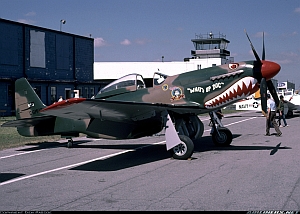 Publisher David Lindsay Junior's family owned the Sarasota Herald Tribune for more than 50 years. When he sold it to the New York Times in 1982, its unique "culture" was already firmly in place.
Publisher David Lindsay Junior's family owned the Sarasota Herald Tribune for more than 50 years. When he sold it to the New York Times in 1982, its unique "culture" was already firmly in place.
In fact, the paper's current publisher was originally hired by Lindsay.
And David Lindsay Jr.'s particular “take” continues to inform that newspaper’s editorial stance on matters involving aviation and "national defense."
Case in point: the newspaper's coverage of the recent sale of the former Huffman Aviation betrayed a willful amnesia about the more unpleasant aspects of having a local airport in its coverage area associated with an enterprise which murdered almost 3000 people on Sept 11, 2001.
Sarasota Herald Tribune Owner and Publisher David Lindsay Jr. was not, it will seem fair to venture, after we have presented the evidence against him, the sort of man to spend much time quibbling over moral distinctions. He was, instead, unique about newspapermen in seeing nothing wrong about combining two separate, and very different careers.
In addition to owning and publishing the Sarasota Herald Tribune, Lindsay, as we will see, was also a weapons manufacturer. A merchant of death.
He made money making machines that kill people. But not just any people.
David Lindsay's product, we will see, was aimed at one specific type of person: It was used to efficiently mow down and kill peasants in Central America.
You know… the little people.
Whether they were actual Communists, or just campesinos trying to persuade United Fruit to pay them a living wage so they could feed their families, is pretty difficult to say.
Mostly, today, they're just dead.